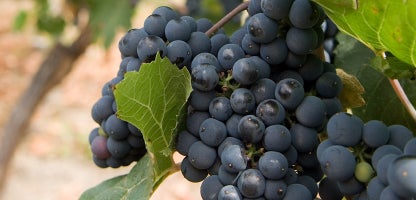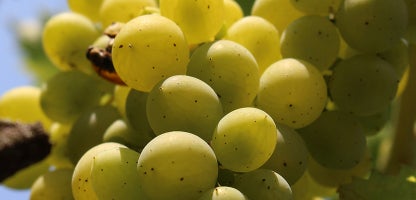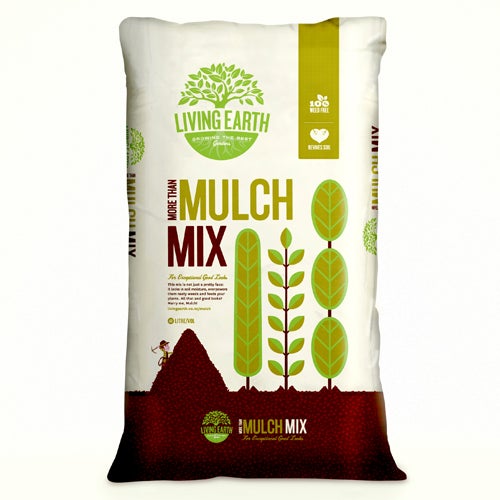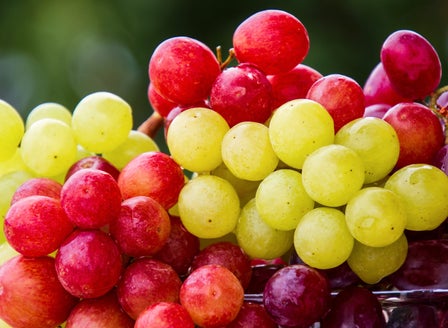Grapes have been grown by humans for millennia, and given how delicious they are (not to mention the invention of wine) it's not hard to see why. Once established, their vigorous vines produce a mass of delicious fruit. They can be grown along a fence, over trellis or up a pergola and will provide delicious fruit and delightful shade right in the heat of summer. The foliage turns bright colours in autumn adding a touch of the Mediterranean to your garden.
Planting Calendar
Grapes like hot and dry climates, which is why spring and summer are considered to be the ideal time for planting grapevines.
Harvest In
3 - 4 Years
Grapes start producing fruit after 3-4 years. It is best to pick grapes on a warm, sunny day as the grapes will have the highest sugar content and will store better if they do not have any surface moisture. Hold a bunch of grapes in one hand and snip the whole bunch off the vine with sharp garden pruners or scissors
Prepare
Grapevines will need a structure to climb upon. Make sure this is sturdy as larger vines become woody and heavy over time. A pergola, fence or large trellises are ideal.
Position
Best grown in an open position in full sun, with good air circulation. They need to be protected from strong winds. Grapes have a deep taproot, so they are best planted into the ground instead of a large container.
Soil
Grapes like a deep free draining soil that is rich in organic matter with a PH of around 5.8-6.8 To improve the organic content in your soil, break up the soil and add Kings Compost and Kings Sheep Pellets then mix together well. If you have compact or clay soil, mix your original soil in with 1 part compost and 1 part pumice sand, and plant in a slight mound.
Plant
Gently tap the plant out of its pot. Dig a hole twice the depth and width of the plants root ball. Mix Kings Compost into your existing soil at a 50/50 ratio, add Sheep Pellets and Kings Nature Organic Fertiliser, then mix together. Back fill the hole with this soil, so that when planted the top of the plant’s roots sit level with the surrounding ground. Firm the soil down gently and water in well with Aquaticus Organic Garden Booster. In heavier clay soils, where drainage is likely to be an issue, plant onto a raised mound and sprinkle Gypsum Clay Breaker into the bottom of the hole, this helps slowly condition the soil and help to break down the clay.
Care
Beginner Tip
When spraying it is better to spray for prevention rather than for cure.
Expert Tip
Very cold or windy conditions during flowering can result in lower yield and fruit drop.
Tip
As the fruit begin to ripen, cover with Bird netting to stop birds stealing your fruit.
Top Varieties
Frequently Asked Questions
Can I prune the vine before winter?
If the vine is getting out of hand, give it a summer prune to open it up to better airflow, and then again once it has finished fruiting in autumn. It may need a harder prune in winter depending on how much it grew over the year.
How often should I water my grapevines?
Watering is essential especially in the first year of planting to allow the roots to get well established. Water slowly allowing the water to sink down into the roots, rather than allowing it to run off the top of the soils surface. Add Saturaid into the soil at planting as this will help channel the water deep down into the root zone. Consider setting up an automatic watering system – these can be simple and inexpensive. Continue to water well once mature vines start setting fruit for juicy grapes at harvest time.
Do grapevines need fertilising?
When planted in the ground liquid feed every month with Aquaticus Garden Booster, from Spring through to the end of Autumn, as this encourages root growth and increases the microbial activity in the soil. Monthly applications of Kings Sheep Pellets will help with soil conditioning and plant health. In addition, dress with Kings Natures Organic fertiliser every 8 weeks through the growing season.
When do grapevines produce fruit?
Grapes are usually ready to harvest from late summer to early autumn (February to April).
What is the best time to plant grapevines?
The best time to plant grapevines is in late winter to early spring (August to September). This allows the vines to establish before the growing season.


















